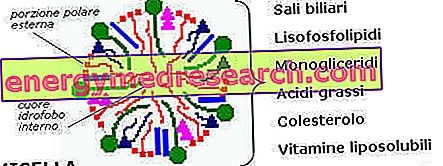What's this
What is the report card?
The red-billed red sea bream - is a saltwater bony fish commonly used for food purposes.

Being autochthonous, it constitutes one of the products of "medium" consumption and is marketed, even in a short supply chain, especially in places bordering the sea.
Despite having excellent and "similar" nutritional characteristics, the bream does not belong to the whole "blue fish". However, it falls within the first fundamental group of foods, as a source of high biological value proteins, specific vitamins and minerals. It is also rich in the two biologically active semi essential fatty acids of the omega 3 group: eicosapentaenoic acid (EPA) and docosahexaenoic acid (DHA), iodine and other valuable nutrients. Cholesterol is present but not excessive.
However, red bream can be considered one of the "poor fish" exponents - as it is cheap, widely available, fished also near the breakthrough with not too demanding bathymetries and with tools and techniques typical of small fishing. Note : It is not a species whose population density is affected by human activity or considered at risk.
Curiosity
Other names - of regional derivation - of the fragolino pagello are: arboretum, sequin, lutrino, luvaro, pagas, arboleto, fraru, murudu, uvarum mafone, medagia, ribon.
In English it is commonly called "pandora".
The gastronomic use of the report is various. Many believe that it is particularly suitable for roast cooking, therefore for irradiation and convection, on the grill and in the oven. However, it is also very good in foil, which allows us to deduce that it can also be used for very different preparations, such as drowning, steam cooking, pot-forming and vacuum cooking. It has delicate meats and goes well with all the vegetables, condiments and spices typical of the Mediterranean tradition.
The fragolino pagello belongs to the biological Order Perciformes, Percoidei Suborder, Sparidae Family, Genus Pagellus and erythrinus species (Linnaeus 1758); in the classification Valenciennes 1838, the species is identified as canariences .
Disambiguation
Fragolino is not the pezzogna fish, which it strongly resembles, but which nevertheless belongs to the species P. bogaraveo or centrodontus .
It is widespread in the North East Atlantic Ocean - including the Mediterranean and the Black Sea. Its color is basically pink, it has the typical aspect of the sparidae and is very similar to the pezzogna fish; the snout is more pointed than the pagro. It is gregarious, tendentially pelagic. It feeds by hunting invertebrates and small fish; it is preyed upon by all the larger predators that colonize its biological niche. It is hermaphroditic and reproduces very effectively. The average size is 25 cm for almost a kilogram of weight.
Nutritional Properties
Nutritional properties of the reportfish
Red sea bream is a fishery product that falls within the 1st fundamental food group. It belongs to the category of poor fish and, despite being very nutritious, is considered not too refined. It is not a blue fish but contains equally good doses of omega 3 semi essential fatty acids (EPA and DHA). Its chemical-nutritional characteristics do not differ substantially from those of the pezzogna fish ( P. bogaraveo ), of the porgy of the Mediterranean ( P. pagrus ) and of the pagro maggiore ( P. major ) - provided that, in these last two species, the values are not detected in specimens of considerable size.
The sea bream has a moderate energy supply, thanks to the very low concentration of fat contained in the meat. Calories are supplied mainly by proteins, followed by lipids; sugars are absent. Peptides have a high biological value - they contain all the essential amino acids compared to the human protein model - and the fatty acids are predominantly unsaturated, with an excellent percentage of polyunsaturated fats; among lipids a significant amount of eicosapentaenoic and docosahexaenoic acid is appreciated.
The fibers are absent and the cholesterol is not negligible, but neither is it excessive. It does not contain lactose or gluten. The concentration of purines is instead abundant. The histamine, totally absent in the fresh product, increases exponentially in the poorly preserved fish. Being a highly protein food, it is also a significant source of phenylalanine amino acid.
The data concerning the vitamin profile are very limited; however, it is reasonable to think that the fragolino report is rich in water-soluble B vitamins - such as niacin (vit PP), pyridoxine (vit B6), cobalamin (vit B12) - and the liposoluble vit D (calciferol). Potassium, iron and zinc levels are appreciable; hypothetically phosphorus and iodine should also abound, but information is not sufficiently accurate in this regard.
Important!
The bream is NOT a toxic species, since it does NOT contain poison - as opposed to puffer fish. However, specimens that eat plenty of dinoflagellates (phytoplankton algae) that produce biotoxins can be toxic to humans.
The most important toxins are PSP (Paralytic Shellfish Poisoning), DSP (Diarrhetic Shellfish Poisoning), NSP (Neurotoxic Shellfish Poisoning) and ciguatera - NOT all of them accumulate in the bream; on the contrary, only those living in the North and East Atlantic Ocean. In the Mediterranean, the sea bream is considered a safe species.
Diet
Stuffed fish in the diet
Fragolino is a protein but very digestible food. However, excessive portions are however not recommended in the therapeutic diet for digestive complications, for example dyspepsia, gastritis, gastroesophageal reflux disease, gastric ulcer or duodenal ulcer etc.
It is a food suitable for most diets, including slimming, which must be low-calorie and normolipidic - balanced from a nutritional point of view.
The abundance of high biological value proteins makes the red sand ideal in the diet of malnourished, debilitated or with an increased need for essential amino acids. It is suitable in the case of very high intensity sporting motor activity, especially in the disciplines of strength or with a very important muscular hypertrophied component, and for all the extraordinarily intense and prolonged disciplines - even aerobic. It is also suitable in cases of pregnancy, lactation, development, pathological intestinal malabsorption or linked to the third age - in which dietary habits and reduced physiological absorption potential tend to create a protein deficit.
EPA and DHA, semi-essential but biologically active omega 3, are very important for the constitution of cell membranes, for the growth of the fetus and children - nervous system, eyes, etc .; moreover, they contrast some metabolic pathologies - hypertriglyceridemia, arterial hypertension, etc. - maintain cognitive function in old age, in some cases improve symptoms of depressive neurosis, etc.
Due to the absence of gluten and lactose, it is pertinent in the diet for celiac disease and for intolerance to milk sugar.
The abundance of purines makes the bladder inadequate for the nutritional regime for hyperuricemia, especially with gouty attacks, and for those suffering from the tendency to calculosis or renal lithiasis with uric acid crystals. As for histamine intolerance, if perfectly preserved it has no contraindications. The massive presence of phenylalanine makes it inappropriate for the diet against phenylketonuria.
The B vitamins have a mainly coenzymatic function; this is why the bream, which should be rich, can be considered a good source of nutrients that support the cellular functions of all tissues. D, on the other hand, is crucial for bone metabolism and the immune system. Note : we remind you that dietary sources of vitamin D are very rare.
Potassium is an alkalizing mineral essential to the conduction of the neuromuscular signal; largely lost through sweating, urine and diarrhea, if deficient it can cause muscle cramps. A good supply is considered therapeutic in primary arterial hypertension. The red sea bream contains excellent percentages and, even if it is not among the primary nutritional sources, it participates in the coverage of specific needs. Iron has the primary function of forming the heme group, present above all in the hemoglobin of red blood cells; a possible deficiency - more frequent in fertile, pregnant women, in malnourished and marathon runners - can cause iron deficiency anemia. The report is therefore useful in the prevention and treatment of this discomfort. The good amount of zinc contributes to supporting the production of antioxidant enzymes in the body. Iodine is necessary for the proper functioning of the thyroid gland - responsible for the regulation of cellular metabolism after the secretion of hormones T3 and T4. Phosphorus, which is hardly lacking in diet, is a necessary constituent of hydroxyapatite - a mineral of bone tissue - and phospholipids - abundant in cell membranes and nervous tissue.
Fragolino meat is allowed in the diet during pregnancy because, being fish far from the top of the food chain, they are not loaded with mercury, methylmercury, lead, dioxins, etc. More generally, it is advisable to pay attention if you wish to eat it in other locations around the world. The sea bream, like other marine creatures, can indeed accumulate biotoxins produced by certain types of phytoplankton algae.
The report does not lend itself to vegetarian and vegan diets; it should also be avoided in the Hindu and Buddhist regime. It has no contraindications for Judaism and Muslimism.
WARNING!
To eliminate the risk of contracting anisakis infestation, before eating raw, it is necessary to reduce the temperature report. Even cooking completely eliminates any pests.
The average portion of red sea bream - as a dish - is 100-150 g (about 100-150 kcal). Note : the whole fish has an edible portion percentage of about 50% on the food still to be cleaned.
Kitchen
Cook the bream
In the kitchen, the pagello can be used as a real main course dish, or as an ingredient for appetizers, first courses and other types of recipes.
Many consider it to be considered as roasting fish, but it is prepared with all methods, systems and cooking techniques - conduction, convection, radiation; therefore, it is excellent: stir-fried, stewed - in soups - boiled, fried, baked, steamed, grilled, vacuum-packed, vasocottura etc. In the east, where other fish of the same biological genus are consumed, it would be an exceptional protagonist for sushi recipes.
The ingredients that blend brilliantly with the fragolino meat are many and varied: all the vegetables, some sweet fruits - like strawberries, even if the play on words has nothing to do with the organoleptic and gustatory aspect - extra virgin olive oil, Norman butter, olives, capers, other fishery products, preserved fish and derivatives - anchovies, anchovy colatura etc. - fish eggs - for example bottarga and urchin eggs - cereals, legumes and derivatives, Mediterranean and oriental aromatic herbs, pepper and chilli, flowers and sprouts - such as capers, asparagus etc. - and so on.
Some famous recipes with sea bream are: baked rennet with potatoes, sea bream in foil - either tin foil or parchment paper - with garlic and rosemary, red sea bream, red sea bream, red sea bream, sea bream, meat sauce red sea bream, red sea bream, sea bream meatballs - fried or baked - boiled sea bream, pickled sea bream etc.
The food and wine pairing of the red report card depends significantly on the preparation in which it is engaged; to avoid mistakes, we recommend using one of the following wines: Collio Ribolla Gialla, Erbaluce di Caluso, Soave Classico and Trentino Nosiola.
Description
Description of the report
The Fragolino report has the typical structure of the sparids. The body is elongated, compressed on the sides. The head looks relatively small and convex - more evident in adults - and the mouth is rather low. The snout is conical and more pointed than the pezzogna and the pagro; the eyes have a diameter of half compared to this length. The teeth are pointed. The dorsal fin has 8-10 hard and 10-11 soft rays. The second and third rays are longer than the others. The pectoral fins are quite long and reach up to half of the trunk. It has two ventral fins and one anal. The tail is bilobate and symmetrical. The color is red in the fins, especially the caudal, and pink in the rest of the body - more intense under the gills. Dorsally, small blue and silver spots are evident. The belly is clear, whitish.
The bream can reach 60 cm in length and 3 kg in weight, despite the average length of 25 cm (between 10-30 cm). Of course, this parameter is directly related to the fish capture depth; older people occupy more demanding depths.
Biology
Notes on the biology of the report
The red sea bream belongs to the Perciformes Order, Percoidei Suborder, Sparidae Family - the same as the bream, sea bream, tanuta, snapper, shear etc. - Genus Pagellus - the same as the pezzogna - and species erythrinus .
The bream colonizes mainly in the North East Atlantic Ocean - from Norway and Great Britain, Madeira and the Canary Islands. It is also found throughout the Mediterranean Basin and in the Black Sea.
It is a demersal and bentopelagic species - which continuously swims but always keeps close to the bottom - and populates both coastal waters and deeper seabed ascents. Bathymetric colonizations ranging from 20 to 100 m, but specimens were also caught at 200-300 m. It has no problems living in all types of substrate: mud, sand, gravel and rock.
The small strawberry is a hermaphrodite; it is born female and becomes male, even if forced males can appear. Up to 13 cm in length, 100% of the hermaphrodite species is female; at 23 cm, 100% of the hermaphrodite species is male - usually the change occurs at 3 years of age for 17 cm.
It usually reproduces in spring but can continue until autumn or complete two whole cycles per year.
The red sea bream feeds on benthic invertebrates, like some worms, but also crustaceans, molluscs, echinoderms and even vertebrates like small fishes. It can be hunted by all predators that hunt in its biological niche, such as snappers, amberjacks, groupers, ducts, tuna, lecce, dolphins etc.
The bream is captured mainly on a professional level. It is fished with trawl nets and, generally, those of bottom. Human sampling does not seem to affect its population density, perhaps due to its extraordinary ability to reproduce. Currently the country that uses it most is Greece, which is gradually starting breeding for aquaculture - similar to the sea bream and sea bass.
The fragolino report is also interested in amateur fishing with line, especially in bottom fishing - even in the bottom, for larger specimens. It is ignored by underwater fishermen who generally find it of unattractive size; athletes capable of exercising at heights in which they can reach a kilogram of weight avoid shooting them, seeking prey of greater hunting interest - groupers and snappers.



